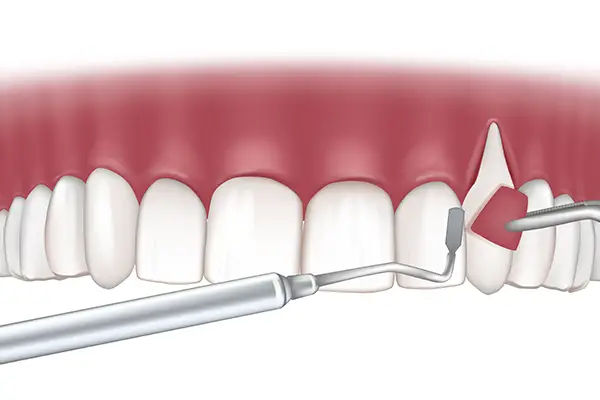Gum Graft When a patient's gums begin to pull away from the base of the tooth, it can expose the root and lead to oversensitivity to both hot and cold foods and drinks. While recession can affect patients, gradually it may get to a point where it simply cannot be tolerated any longer. If a patient can no longer tolerate the discomfort, that is where gum grafting procedures can help. They can stabilize supportive gum tissue and maintain a healthy environment to help save the natural tooth. If you have questions regarding this procedure, we are always ready to answer your questions at Mission Hills Periodontics. When a patient's gums begin to pull away from the base of the tooth, it can expose the root and lead to oversensitivity to both hot and cold foods and drinks. While recession can affect patients, gradually it may get to a point where it simply cannot be tolerated any longer. If a patient can no longer tolerate the discomfort, that is where gum grafting procedures can help. They can stabilize supportive gum tissue and maintain a healthy environment to help save the natural tooth. If you have questions regarding this procedure, we are always ready to answer your questions at Mission Hills Periodontics.Treatment for Gum RecessionThe first step in treating gum recession is not a gum graft but rather a deep professional cleaning. It will remove the tartar and bacteria which will help gums to heal properly. If the gum recession is too severe, it may require a gum graft. Gum Graft TypesThere are multiple types of gum grafts. Each can be specialized for each patient's needs to help restore the gums. The connective tissue graft uses a small amount of tissue taken from the top layer of the gums. It is then sutured to the section of affected tissue to promote growth. This is considered the most frequently used gum graft. A gingival graft removes a section of tissue from the roof of the mouth and is added to the area of the gum tissue in need of rebuilding. This is ideal for thinner gums to prevent recession and where additional gum tissue is needed. The third type of graft is a pedicle graft. An incision is made on either side of the area where the gum recession is occurring and is reserved for the most serious gum recession situations. Pedicle grafting is by far the most successful grafting procedure because it never stops the blood flow while adding the most significant amount of gum tissue when compared to other grafting procedures. These procedures might seem involved but they are rather routine and do not take much time. Patients will be asked to be careful for the next few days following the procedure, with additional instructions to rinse their mouth out with antibacterial solutions to maintain a bacteria-free mouth. BenefitsThis treatment halts the gum recession which can lead to high sensitivity to temperature differences in food and drinks. It can also lead to bone loss if not addressed. Once the gumlines have been grafted and treated, patients can immediately see a difference in the mirror. Aftercare and PreventionIt is important to always remember to brush and floss your teeth and your gums. By using proper flossing and brushing techniques, patients can help keep bacteria and plaque from adhering to their teeth, forming tartar. Although it is difficult for patients to notice gum recession, our professional staff members have been trained to spot it and can identify it in the early stages. When this is done, a gum graft might not be necessary and other nonsurgical options can be explored. Let our staff evaluate your gums at Mission Hills Periodontics and let you know if you suffer from gum recession. You can always call us at (619) 356-5989 to come into our office. |
|
|